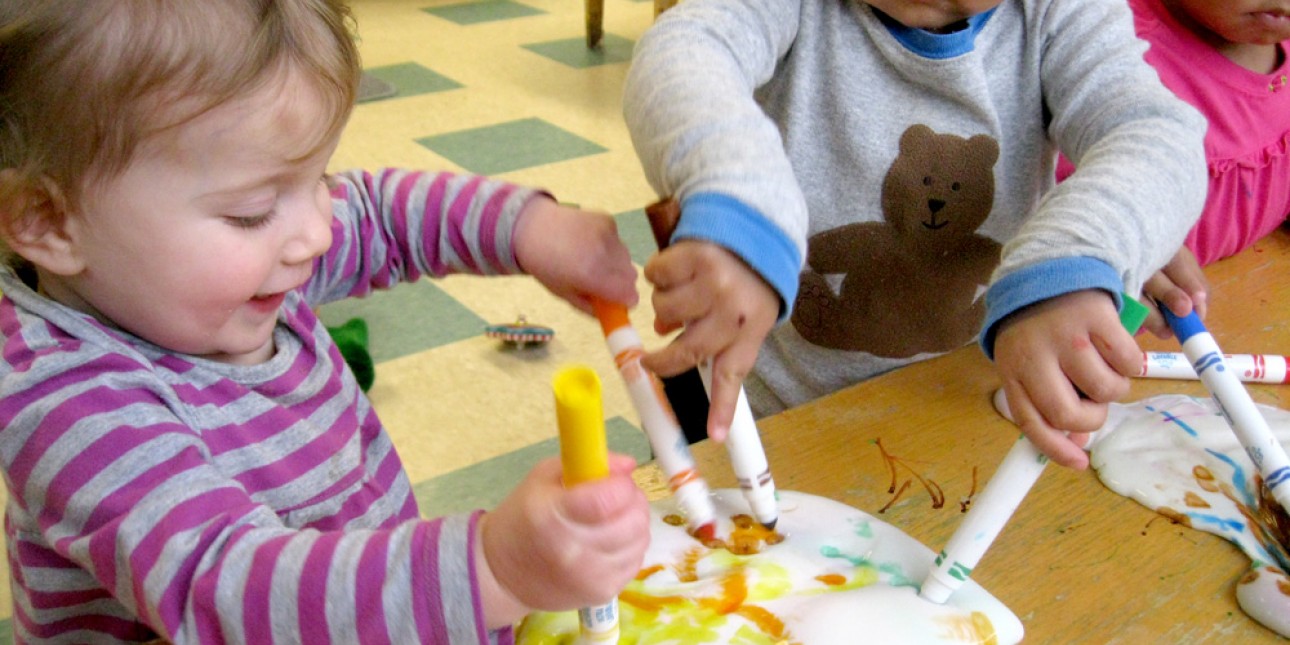In the Classroom: The Bumblebees

Playing to Learn!
Playing is defined as “engaging in activities for enjoyment and recreation rather than a serious or practical purpose.” However, playing is an intricate aspect in child development.
Play is a dynamic, ever-changing process that is multi-sensory, interactive, creative, and imaginative. When children play, their whole brain is stimulated.
Through play children learn about themselves and the world around them. Playing promotes problem solving, relationship building, and imagination. It is also a great way to practice language, and develop fine and gross motor skills. Most importantly, playing is fun!
Infants and toddlers usually engage in solitary play. At times, they will play in the same area with another child, but not often together.
In the Bumblebee classroom, we encourage group play on a daily basis. Often you will see a group of children at the sensory table enjoying morning invitations, or in the kitchen pretending to prepare a meal for their friends. During these times, a teacher is present to promote language development and interaction.
We also encourage the children to work together to complete a creative art project. At times we will receive opposition from the children with words like "no" and "mine," but we remind the children to share and take turns.
At home, parents can devise activities that are both fun and educational. Creating play spaces is a great way for parents and children to interact. In play spaces parents and children can paint, draw, color, and use their imagination with sensory activities or dramatic play.
During play activities, parents can describe their children’s actions, as well as their own, to promote language, and ask questions to promote problem solving and thinking. The next time you are wondering, “What can we do with the children that is fun and educational?” The easy answer is PLAY!
Classrooms